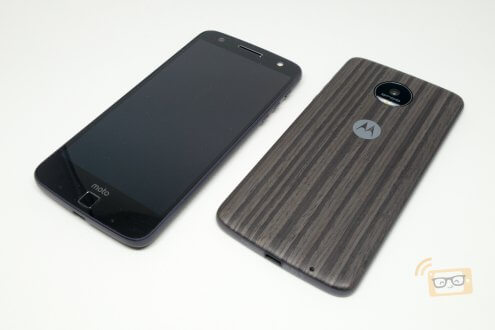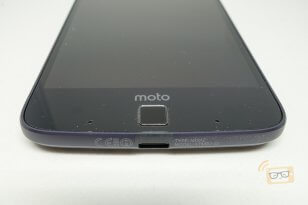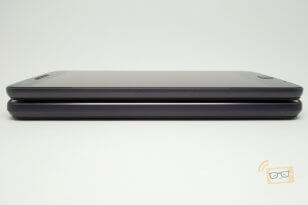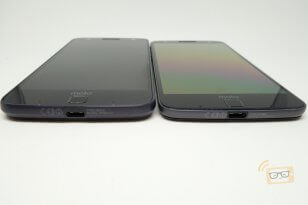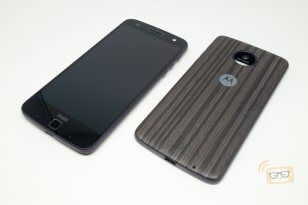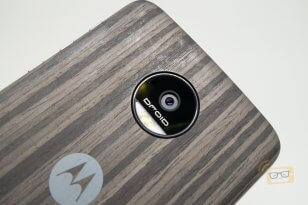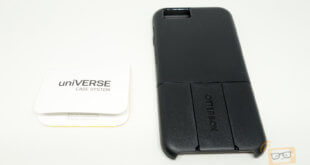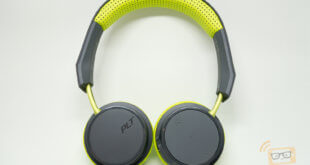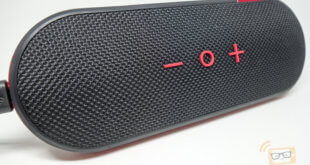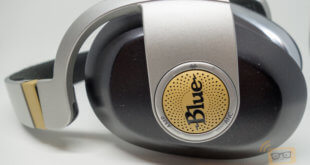Motorola Moto Z Force Droid is the second of two new flagships that were released by company recently. We’ve reviewed the Motorola Moto Z Droid, which is the younger sibling to the Moto Z Force Droid. So, how does the big brother compare to its younger sibling? Let’s find out after we take a quick look at the specs.
Specs:-
- Processor: Qualcomm® Snapdragon™ 820 processor with up to 2.2GHz quadcore CPU with Adreno 530 GPU
- Display: 5.5” Quad HD AMOLED display (1440p [2560×1440] / 535 ppi), Motorola Moto Shattershield
- Memory: 4 GB of RAM
- Storage: 32/64 GB with an option of a microSD which supports up to 2 TB
- Camera: 21 MP; f/1.8 rear-facing camera, 5 MP front-facing camera
- Battery: 3,500 mAh battery
- OS: Android 6.0 Marshmallow with Moto enhancement
Review
Hardware
Design & Build Quality
Design and build quality wise, the Moto Z Force Droid is very similar to the Moto Z Droid. The only differences users will notice are its thickness and weight. The Moto Z Force Droid measures 0.08″ thicker and 1 oz heavier when compared to the Moto Z Droid.

Along the right edge of the device, users will find the power button (grooved) and the volume buttons, which are evenly spaced. At the bottom of the device, users will find the USB Type-C charging port. Like the Moto Z Droid, the Moto Z Force Droid utilizes the USB Type-C for audio too. The device also has a fingerprint reader located on the bottom of the display, which is pretty much the standard these days on new devices.

Lastly, a nanoSIM and microSD slot is located at the top of the devices. At the back of Moto Z Force Droid, users will notice the 16-pin connector which accommodates the new Moto Mods (we will be doing a separate review on the Moto Mods).
Overall, the Moto Z Force Droid has the same design and build quality as its younger sibling.
Display
The Moto Z Force Droid also boasts a 5.5″ AMOLED display with a 2,560 x 1,440 resolution display (~535 ppi). With its AMOLED display, the colors displayed are sharp and vibrant. Just like the past Motorola devices, Moto Z Force Droid also has Moto Display, which shows user a sneak peak of notifications.
However, the Moto Z Force Droid’s display is protected by Motorola’s Moto ShatterShield instead of Corning’s Gorilla Glass. It consists of 5 layers, designed to absorbed the shock from impact and guaranteed not to crack or shatter.
Performance
Performance wise, the Moto Z Droid and Moto Z Force Droid are similar. Powered by the Qualcomm Snapdragon 820 processor, the Moto Z Force Droid also comes with 4 GB of RAM. It comes with 2 different storage options; 32 GB and 64 GB. Motorola also included a microSD slot, capable of supporting microSD up to 2 TB.
We did not notice any difference in performance, with resource-intensive games such as ShadowGun and Riptide 2 had no noticeable lags.
Battery Life
The Moto Z Force Droid comes with a larger 3,500 mAh non-removable battery. Motorola claimed that the Moto Z Force Droid can last up to 40 hours of battery life. It also supports TurboPower charging; users can obtain up 15 hours of power with just 15 minutes of charging time. On average, the charging time from 0% to 100% came close to approximately an hour.
Our usual battery test was also performed where we ran a video continuously in loop while the device was connected to LTE and Wi-Fi with Bluetooth and GPS turned on and connected to other devices. As for the screen display, it was set to 1/2 of the maximum brightness. We were able to obtain about 20 hours for the Moto Z Force Droid. For mixed usage, we managed to obtain approximately 38 hours.
Camera
The Moto Z Force Droid features a 21 MP rear-facing camera with optical image stabilization (OIS), which helps with the sharper images. Motorola also includes Deep Trench Isolation (DIT) in the Moto Z Force Droid, which improves light capture.
Photos taken has a well-balanced color overall in decent and low lighting environments.
The Moto Z Force Droid is also capable of capturing 1080p HD video at 60fps and also 4K video at 30 fps. On the front is a 5MP camera, which features a wide-angle lens, which is great for all the important selfies and a dedicated front flash to capture images in low light conditions.
Audio & Call Quality
Much to our disappointment, the Moto Z Force Droid also does not feature dual front stereo speakers. However even so, the audio quality is one of the better ones we tested.
Utilizing Verizon’s network running on 4G LTE coverage area, calls were crisp and clear while making and receiving calls. The device also has active noise cancellation with a dedicated mic.
Software
The user interface on the Moto Z Force Droid is pretty much the same as the Moto Z Droid. It comes pre-loaded with Android 6.0.1 Marshmallow; with updates to Android 7.0 Nougat. Verizon did have some of their apps pre-installed, which we are not really a fan of.
Motorola also included a few of its own signature features such as Moto Active Display and the “Twist Gesture” for quick launching of the camera app.
Final Thoughts
The Moto Z Force Droid is indeed one of the best device we’ve ever tested to date. For users who are considering if they should be getting the Moto Z Droid or the Moto Z Force Droid, our suggestion is the Moto Z Force Droid. With the larger battery capacity and the slightly better photo quality, it is definitely the better option. But if a thinner and lighter device is all the user care about, the Moto Z Droid definitely will not disappoint too.
 Pocket Insider Latest Technology Review
Pocket Insider Latest Technology Review
